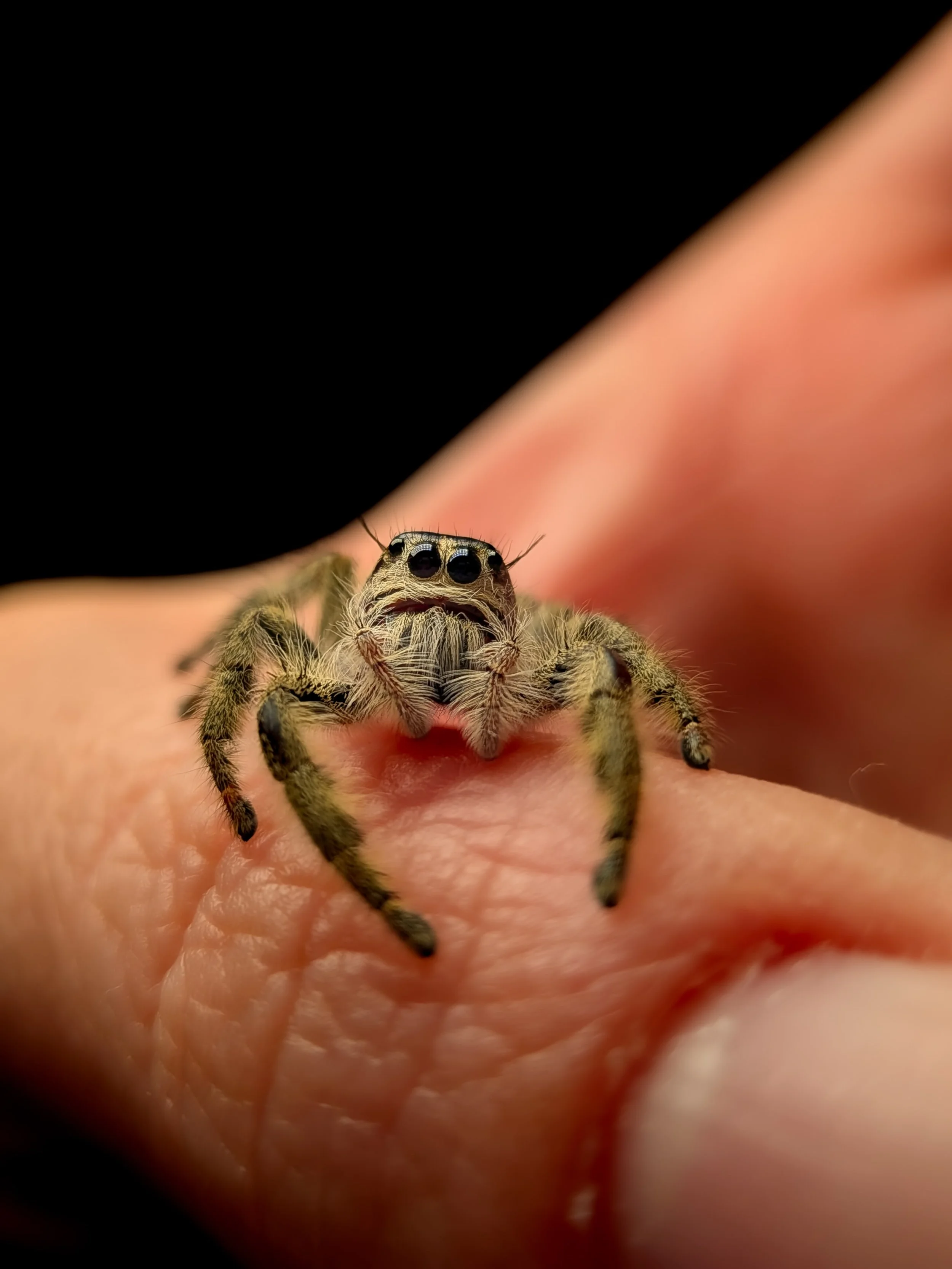How to Take Care of Your New Jumping Spider
Jumping spiders are curious, intelligent, and surprisingly affectionate little companions.
They don’t need much space, but they do need the right setup to keep them safe, healthy, and happy. Here’s everything you need to know to care for your spood:
Housing
Enclosure size: A 15x12x10 cm enclosure is perfect for most species. Bigger isn’t always better, as jumpers like to see their prey and explore cosy spaces.
Ventilation: Ensure cross-ventilation (air holes on at least three sides). Good airflow prevents mould and keeps your spider healthy.
Decor: Add twigs, cork bark, fake plants, or safe live plants for climbing and webbing. They love vertical surfaces.
Temperature & Humidity
Temperature: Most jumping spiders thrive at normal room temperatures (21–26°C). A heat mat will be required during the colder months.
Humidity: Mist lightly every day on one side of the enclosure. Always allow it to dry, as too much moisture can harm them. We suggest purchasing a magnetic thermometer/hygrometer to accurately measure the temperature and humidity in their enclosure at all times. We sell them! (You can find it here)
Feeding
Diet: Small live insects (e.g., fruit flies for slings, green/blue bottles, and green/blue bottle flies for adults). Never feed wild-caught bugs, as they may carry pesticides.
Feeding schedule: Adults usually eat every once a week, but it will depend on the abdomen size. (You can find a feeding chart here) Slings (spiderlings) will need feeding more often (2-3 times a week).
Tip: Remove uneaten food within 24 hours to prevent stress.
Water
Jumping spiders don’t drink from water bowls. Instead, they sip droplets from leaves or enclosure walls, as well as eaten prey. A light misting is enough to keep them hydrated.
Moulting
Your spider will moult as it grows.
During this time, they may refuse food and hide away.
Never disturb or handle your spider while moulting.
Leave them in peace until they’ve hardened up again (usually 2–3 days).
Handling
Jumping spiders can become quite friendly!
Always handle them close to a soft surface in case they jump.
Never grab. Let them walk onto your hand.
Short, calm sessions are best to avoid stress.
Final Tip
Every jumping spider has its own little personality. Spend time observing, be patient, and you’ll quickly learn what makes your spood happy.
Caring for a jumping spider is simple, rewarding, and full of joy. Treat them gently, and they’ll bring you endless tiny smiles.






